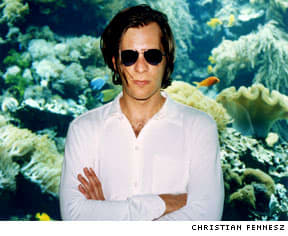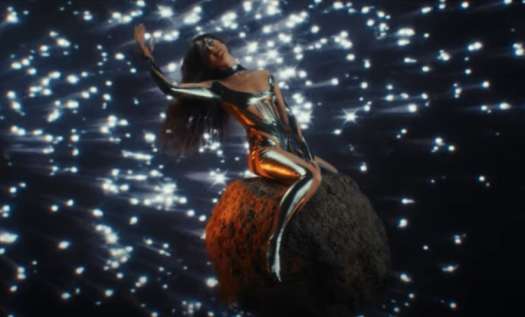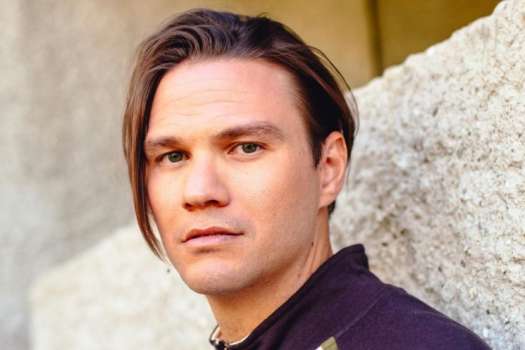In a parallel universe, far out of range of electroclash and garage rawk, there's a vibrant renaissance going on. For the past two years, shoegazers have come back into their own, but where their revivalist contemporaries offer little in the way of novel ideals, latter-day foot fetishists are making an old form sound fresh. Maybe that's because, like goth, shoegazer music isn't so much a trend as a state of mind. For those who've had enough of facile nostalgia, it couldn't be coming at a better time.
Where the first generation of gaze was largely confined to Britain, its postmillennial incarnation has been most vibrant outside the UK, nowhere more so than in Europe, where Austria's Mego label has been leading the charge back into swirling psychedelia. With his 2001 album, Endless Summer, Vienna's Christian Fennesz offered a wondrous study in aural contrasts, as lurching six-string distortion doubled back on itself until radiant melodies emerged, enveloping the listener in a blissful womb of sound.
As with the work of canonical gaze acts like Ride and Chapterhouse, Fennesz's opus succeeded in juxtaposing the familiar/human with the alien/inhuman. But where his predecessors had relied on the placement of the human voice (however denatured) within the folds of instrumental distortion, the Austrian's interpretation was entirely voiceless, forged out of the interplay of electric guitars and cutting-edge digital effects.
In the wake of Endless Summer, a wave of folktronic artists has crashed upon the shore, all clearly indebted to gaze of yore. There's no mistaking the dream-pop influence on Australia's Clue to Kalo, whose recent Come Here When You Sleepwalk sounds like Slowdive and Boards of Canada jamming together in Central Park. The same could be said of California's Nobody, the maker of Pacific Drift, a psych-pop masterpiece wherein fluttering vibraphones shimmer peacefully alongside chiming bells and whispered vocals.
Despite its sunny melodies and glitchy instrumentation, the folktronic movement falls short of first-generation gaze in its utter lack of intensity. Just in case we'd forgotten, shoegazer music is supposed to be loud, with long droning riffs and waves of feedback creating a wall of sound through which melodies cannot pierce unharmed.
Thankfully, a clutch of young groups are doing their best to wake twee folktronica out of reverie. Among the most blissful racket-makers out there is Phaser, a D.C. trio whose clamorous atmospherics recall the best of Spiritualized. Meanwhile, San Francisco's Stratford 4 follows in the footsteps of My Bloody Valentine, offering credible pop songs blanketed in layers of guitar gauze. A dozen years on from the height of grunge, Seattle has entered the fray again, giving us Voyager One and the Melody Unit; while the former group is more electronic-influenced, the latter's 2001-released Choose Your Own Adventure is a raucous affair, cathartic and consolatory all at once. Finally, one of the second-wave's best acts is Malory, a German quartet and the best of a brilliant lot on Sacramento's Claire Records (www.clairecords.com).
With all these youngsters entering the field, it's no surprise that some of the genre's forefathers are releasing new material. Trouble is, the old-timers don't seem to have much left to say. Chief among the disappointments is MBV's Kevin Shields, whose work on the soundtrack to Lost In Translation is tepid at best. The same goes for Spiritualized's Amazing Grace, a passionless and formulaic recording that does little to elevate the form. Finally, the Neil Halstead-led Slowdive whose early albums inspired last year's excellent folktronic tribute, Blue Skied An' Clear has just released Spoon & Rafter, a winsome folk-rock effort with nary a foot pedal in sight. Nowadays, the only reason why ex-heroes like Shields and Halstead should be gazing at their shoes is out of embarrassment.
Lucky for us, Canadians are making some of the best neo-gaze music out there, whether it's the Fennesz-inspired digitalism of Tim Hecker and Mitchell Akiyama, the MBV-sounding dream-pop of Manitoba's Up In Flames, or the aching symphonies of Broken Social Scene and the Peter Parkers. Each of these acts has taken shoegazer's blueprint and built something gloriously new, erecting majestic paeans to love and loss, calm and calamity, rapture and regret themes to which no mere fad can do justice.
Where the first generation of gaze was largely confined to Britain, its postmillennial incarnation has been most vibrant outside the UK, nowhere more so than in Europe, where Austria's Mego label has been leading the charge back into swirling psychedelia. With his 2001 album, Endless Summer, Vienna's Christian Fennesz offered a wondrous study in aural contrasts, as lurching six-string distortion doubled back on itself until radiant melodies emerged, enveloping the listener in a blissful womb of sound.
As with the work of canonical gaze acts like Ride and Chapterhouse, Fennesz's opus succeeded in juxtaposing the familiar/human with the alien/inhuman. But where his predecessors had relied on the placement of the human voice (however denatured) within the folds of instrumental distortion, the Austrian's interpretation was entirely voiceless, forged out of the interplay of electric guitars and cutting-edge digital effects.
In the wake of Endless Summer, a wave of folktronic artists has crashed upon the shore, all clearly indebted to gaze of yore. There's no mistaking the dream-pop influence on Australia's Clue to Kalo, whose recent Come Here When You Sleepwalk sounds like Slowdive and Boards of Canada jamming together in Central Park. The same could be said of California's Nobody, the maker of Pacific Drift, a psych-pop masterpiece wherein fluttering vibraphones shimmer peacefully alongside chiming bells and whispered vocals.
Despite its sunny melodies and glitchy instrumentation, the folktronic movement falls short of first-generation gaze in its utter lack of intensity. Just in case we'd forgotten, shoegazer music is supposed to be loud, with long droning riffs and waves of feedback creating a wall of sound through which melodies cannot pierce unharmed.
Thankfully, a clutch of young groups are doing their best to wake twee folktronica out of reverie. Among the most blissful racket-makers out there is Phaser, a D.C. trio whose clamorous atmospherics recall the best of Spiritualized. Meanwhile, San Francisco's Stratford 4 follows in the footsteps of My Bloody Valentine, offering credible pop songs blanketed in layers of guitar gauze. A dozen years on from the height of grunge, Seattle has entered the fray again, giving us Voyager One and the Melody Unit; while the former group is more electronic-influenced, the latter's 2001-released Choose Your Own Adventure is a raucous affair, cathartic and consolatory all at once. Finally, one of the second-wave's best acts is Malory, a German quartet and the best of a brilliant lot on Sacramento's Claire Records (www.clairecords.com).
With all these youngsters entering the field, it's no surprise that some of the genre's forefathers are releasing new material. Trouble is, the old-timers don't seem to have much left to say. Chief among the disappointments is MBV's Kevin Shields, whose work on the soundtrack to Lost In Translation is tepid at best. The same goes for Spiritualized's Amazing Grace, a passionless and formulaic recording that does little to elevate the form. Finally, the Neil Halstead-led Slowdive whose early albums inspired last year's excellent folktronic tribute, Blue Skied An' Clear has just released Spoon & Rafter, a winsome folk-rock effort with nary a foot pedal in sight. Nowadays, the only reason why ex-heroes like Shields and Halstead should be gazing at their shoes is out of embarrassment.
Lucky for us, Canadians are making some of the best neo-gaze music out there, whether it's the Fennesz-inspired digitalism of Tim Hecker and Mitchell Akiyama, the MBV-sounding dream-pop of Manitoba's Up In Flames, or the aching symphonies of Broken Social Scene and the Peter Parkers. Each of these acts has taken shoegazer's blueprint and built something gloriously new, erecting majestic paeans to love and loss, calm and calamity, rapture and regret themes to which no mere fad can do justice.




